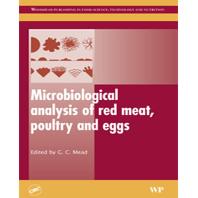Macrobiological analysis advised for poultry meat and eggs

A new publication, which focuses on microbiological analysis, gives advice to meat and egg processors on how to use the technology to prevent contamination and food-borne illnesses, such as salmonella.
The advice offered comes at a good time as the EU is currently clamping down on all food-borne pathogens. Poultry and eggs are still amongst the top causes of potentially fatal diseases related to food.
According to editor of “Microbiological analysis of red meat, poultry and eggs”, G. C. Mead, Microbiological analysis is one of the most effective ways of controlling the safety and quality of foods as it identifies the viruses, bacteria, fungi and parasites that cause disease such as salmonella and E coli.
Each chapter of the book examines various aspects of microbiological analysis, including sampling methods, the use of faecal indicators, current approaches to food testing, pathogen detection, and microbial identification techniques. The book also features sections on current EU food safety legislation.
G. C. Mead says that there are around 0.6 millions cases of food-borne illnesses attributed to red meat and poultry between 1996 and 2000 in England and Wales alone. In this four year period 305 cases led to death.
Publication: Microbiological analysis of red meat, poultry and eggs. Editor: G. C. Meads. Publisher: Woodhead Publishing in Food Science, Technology and Nutrition.
Publication: Microbiological analysis of red meat, poultry and eggs. Editor: G. C. Meads. Publisher: Woodhead Publishing in Food Science, Technology and Nutrition.













